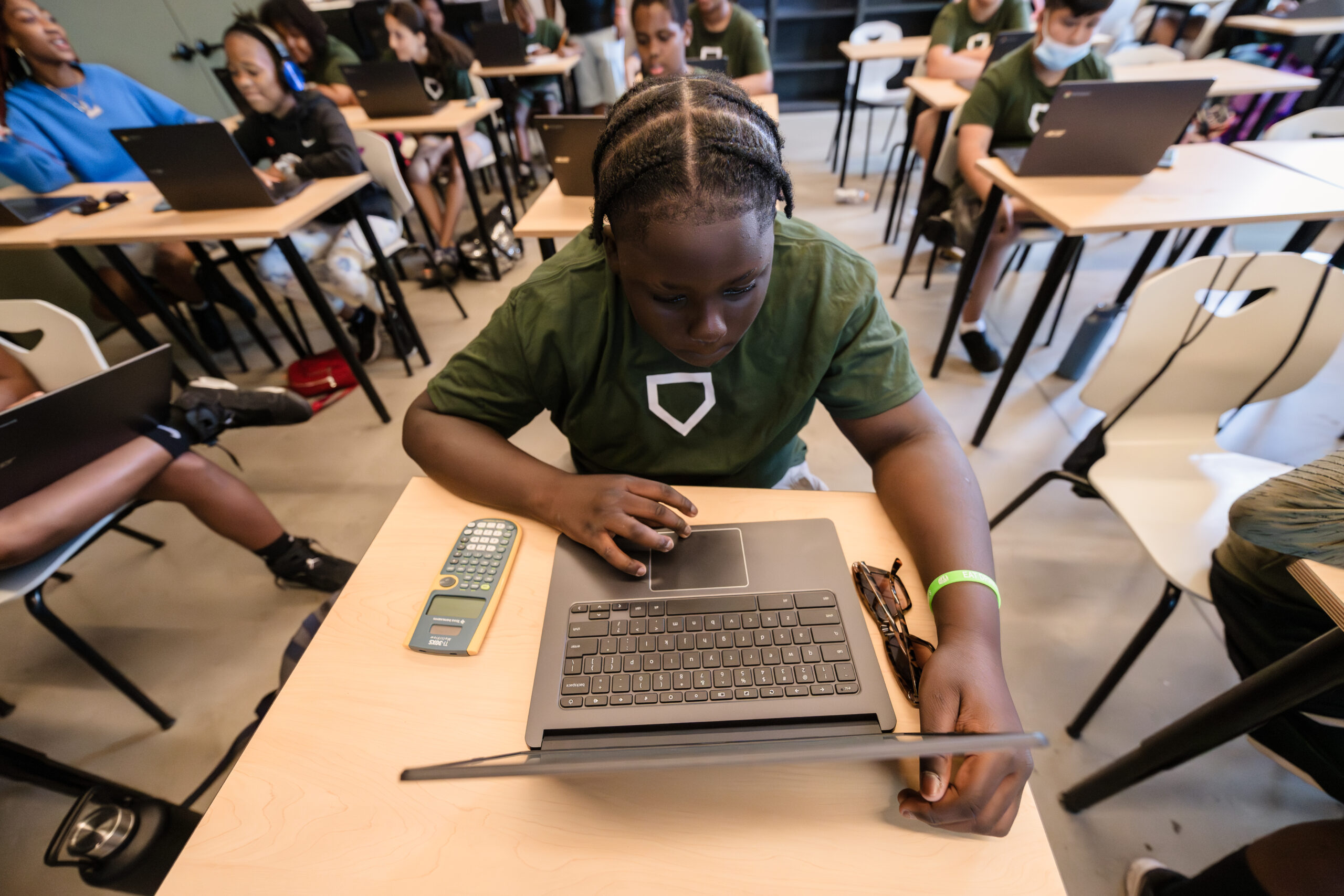Education is about preparing students for the future, but today’s rapidly changing world demands new approaches. While technological revolutions have transformed nearly every industry, most K-12 classrooms remain anchored in past practices. At DREAM, we’re embracing innovation with artificial intelligence to provide a future-ready education for our students so that they develop the skills, mindsets, and critical thinking abilities needed for success in an increasingly complex and fluid world.
Why AI literacy can’t wait
The need for such an effort isn’t theoretical. By the time our current sixth graders enter the workforce, AI literacy will be as fundamental as reading comprehension is today. More than half of all careers will demand familiarity with AI tools, and fluency in their applications and limitations [1, 2]. This is why our responsibility as a public school extends beyond traditional academics, and involves preparing our entire school community — students, teachers, and staff — for a future where adaptability and discernment are essential.
“By the time our current sixth graders enter the workforce, AI literacy will be as fundamental as reading comprehension is today.”
Katie Doctor, Chief Strategy Officer at DREAM
As we navigate this path forward, we recognize both the opportunities and challenges that AI presents. At DREAM, we’ve approached this technological frontier with deliberate care. Many educational organizations, especially within the secondary (K-12) education sphere, hesitate to embrace AI. They have legitimate concerns about data privacy, the integrity of student work, and the risk of technological dependence without deeper understanding. These reservations reflect the profound responsibility educational spaces and educators bear: to introduce new tools without compromising our standards.
AI innovation and support for teachers and staff
The philosophy of considered, thoughtful AI use begins where it can have immediate impact: supporting our educators. Consider DreamCycle, our assessment and reteaching system enhanced by AI capabilities. The technology streamlines grading processes that once consumed evenings and weekends, allowing teachers to deliver personalized instruction with unprecedented speed. Instructional leaders can identify gaps in student learning and quickly turn around reteach plans to address those specific needs. What previously took weeks now happens in days, yet the critical decisions — which concepts to reinforce, how to approach individual student needs — remain firmly in our educators’ hands. You can see our process here.
Similar innovations have emerged throughout our organization. These include:
- AI-generated Regents (New York State statewide exams required for high school graduation)-aligned science questions that maintain academic rigor while saving preparation time
- Automated interview scheduling that streamlines school staff recruitment
- Streamlined IT processes
- Nuanced tracking of student engagement patterns that helps us intervene before small challenges become significant obstacles.
“The efficiency gains are substantial, but what matters more is where we redirect the reclaimed time and attention. Each minute not spent on administrative tasks becomes another opportunity for the meaningful human connections that define a DREAM education — building student confidence, nurturing aspiration, and making learning joyful.”
Adam Feiler, Managing Director of Curriculum and Instruction at DREAM

Our responsibility as a public school extends beyond traditional academics, and involves preparing our entire school community — students, teachers, and staff — for a future where adaptability and discernment are essential.
Empowering students to use AI ethically
We recognize that AI, like any powerful tool, requires thoughtful implementation. Its potential for both benefit and harm depends entirely on how we choose to use it. That’s why we’re particularly focused on cultivating critical thinking about these technologies.
This critical approach informs how we introduce AI directly to our students. We’ve addressed these challenges through comprehensive policies that prioritize ethical use and transparency. Our Student Artificial Intelligence Usage Policy exemplifies this approach, by treating AI not as a threat to be regulated but as a resource to be explored. Rather than imposing restrictive rules, our AI Task Force has created clear guidelines that empower students to use AI for brainstorming ideas, drafting essays, solving problems, and creating projects, while maintaining academic integrity and critical thinking.
Students learn to use AI, interrogate it, verify information, refine outputs, and own their responsibility to engage with diverse, credible sources. We want DREAM students to not only navigate an AI-driven world but also help shape it — to build businesses, develop applications, and create tools that serve communities like theirs.
“We believe that the best way for students to learn about and utilize AI tools is by experiencing it firsthand. While teachers provide guidance on effective use, students have opportunities to explore these tools as they see fit. Much like they would any other educational resource.”
Crystal Lane, DREAM’s Chief Education Officer
Keeping people at the helm
These approaches — supporting teachers with AI tools, fostering critical thinking, and empowering students through ethical guidelines — together form the foundation of our practice.
At DREAM, we believe in the transformative power of high expectations coupled with unwavering support, and the irreplaceable value of caring adults who see each child’s potential. We do not believe that AI can replicate these essential human elements. But when thoughtfully integrated into our educational approach, it can help us deliver personalized support more effectively to more students.
Each innovation we adopt passes through the same filter: Does this help us serve our students with greater love? Does this strengthen our ability to teach, lead, and support?
When the answer is “yes,” we move forward in service of the enduring human connections at the heart of learning. In this carefully balanced approach, DREAM has found improved efficiency and expanded possibility through AI, for our students, our staff, and the communities we serve.
Reach out to us at if you have any questions or want to learn more about our AI policies.
FURTHER READING




0 Comments